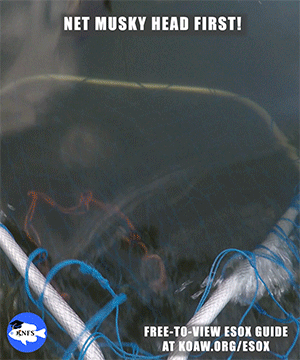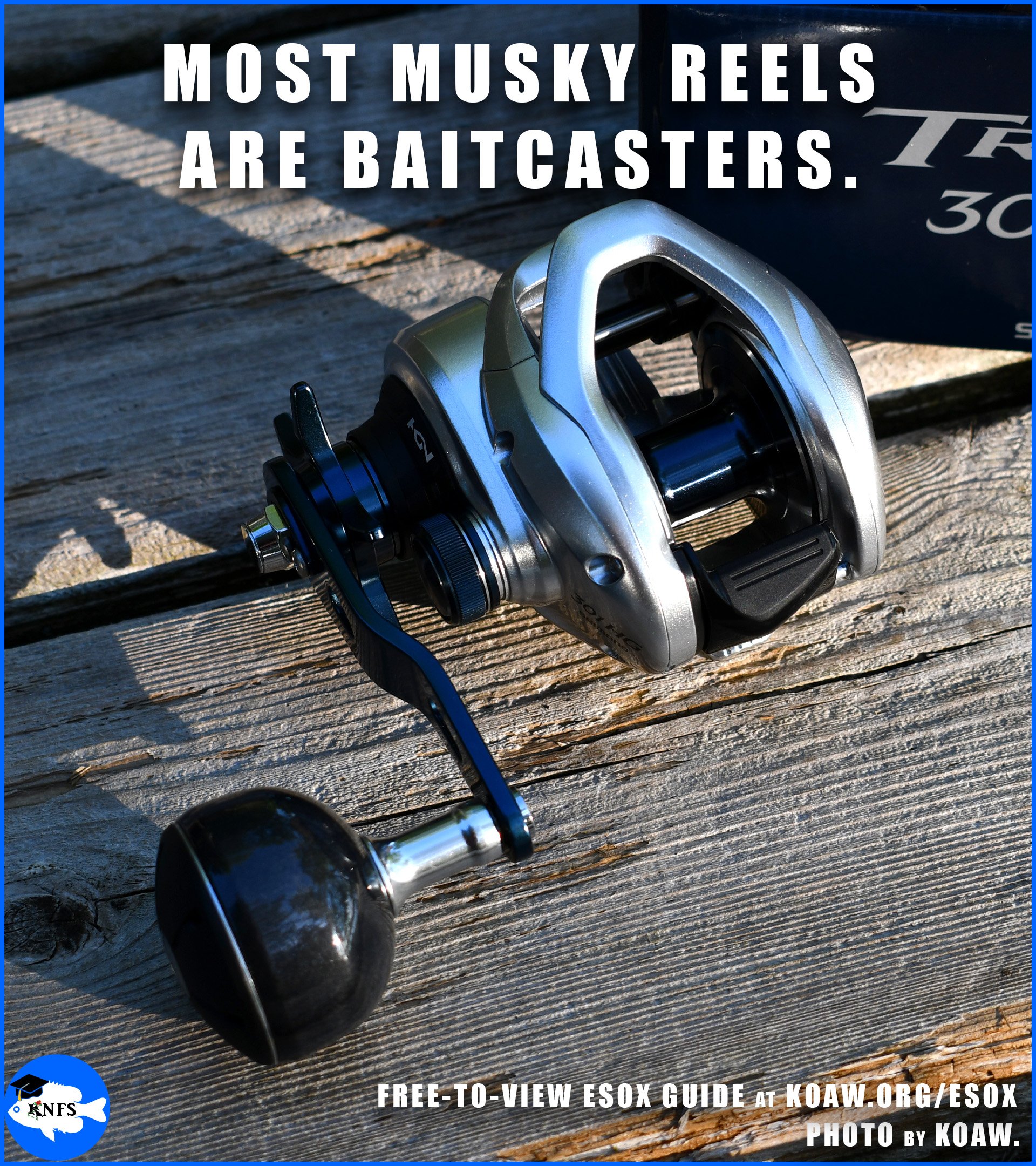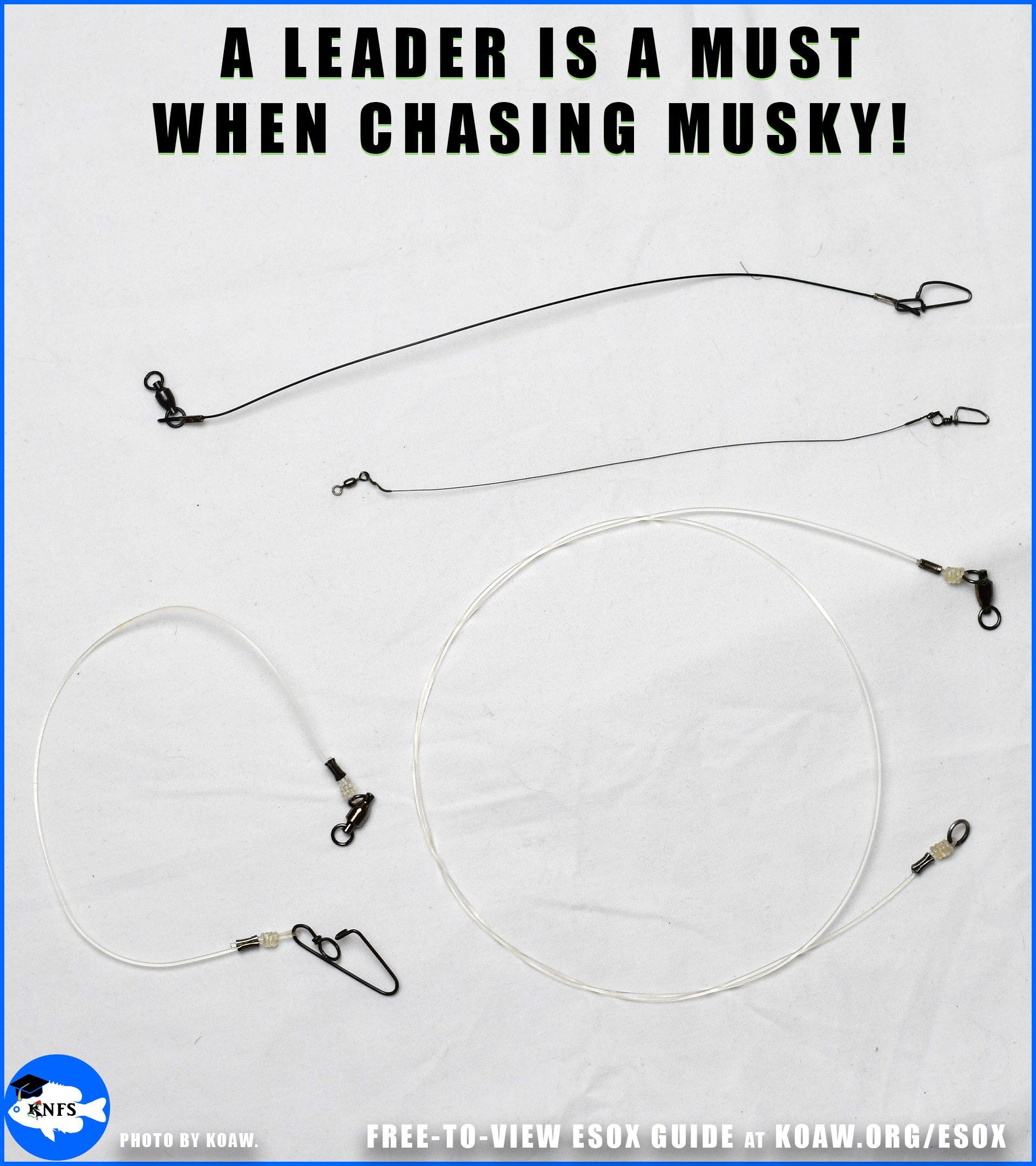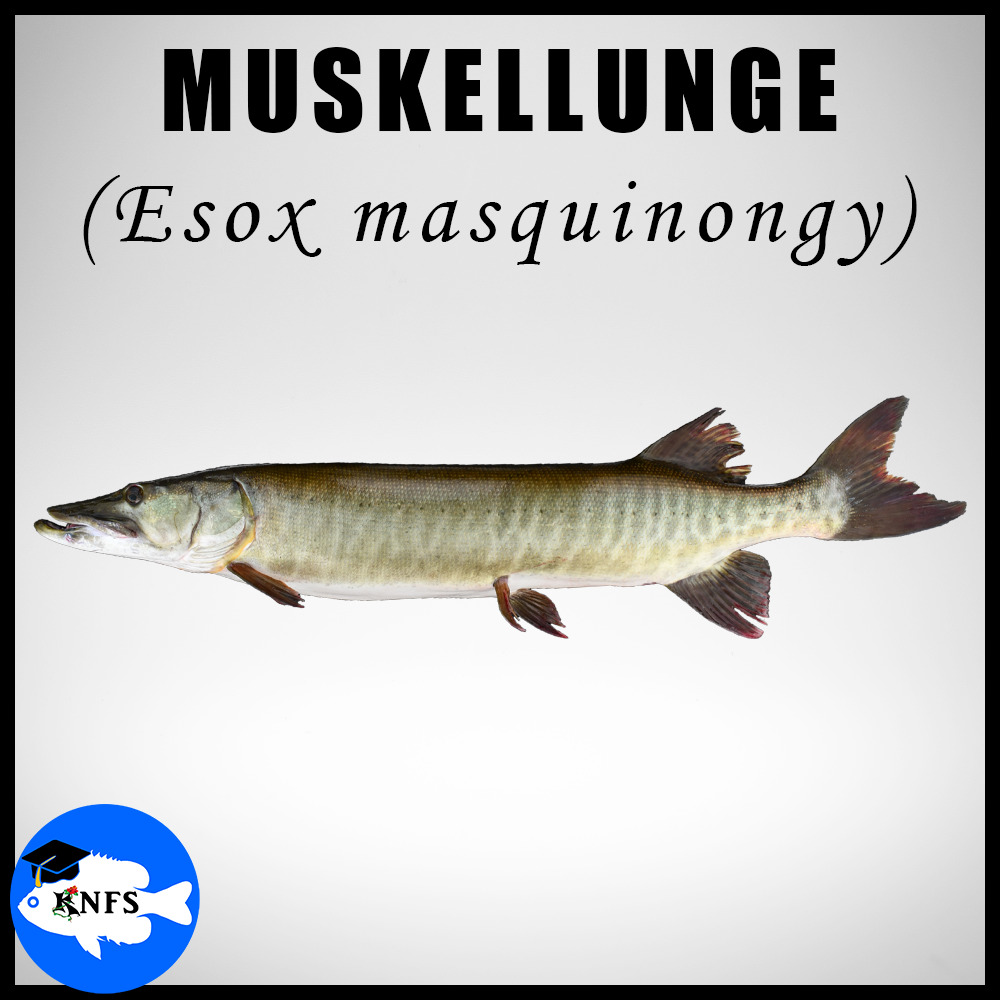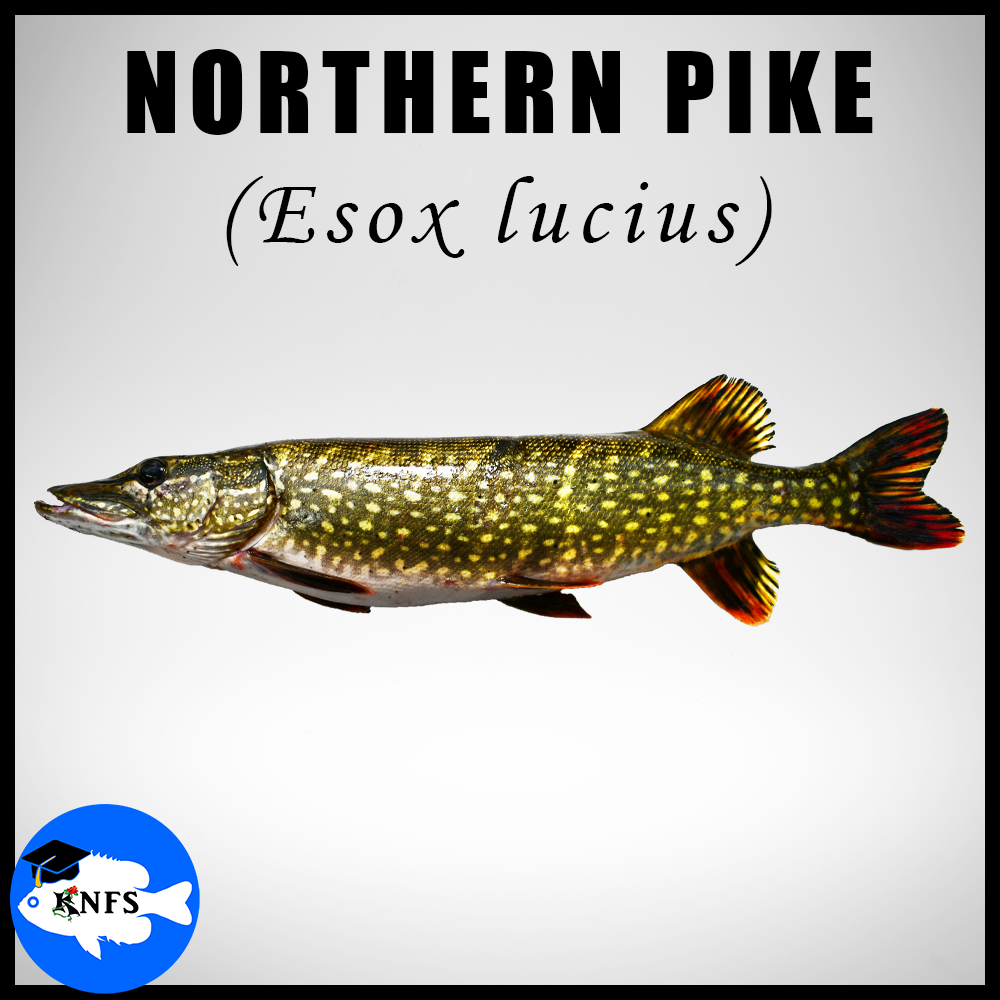By Koaw 2023,
We never forget our first musky…
Anglers that are new to musky fishing will find this page very useful. We’ll cover some must-know details about the basics. Any angler that wishes to become more serious about musky fishing should check out some published books on the topic.
I’ve been a musky angler for the better part of two decades. In that time, I’ve helped other anglers land their first muskies, landed a good number of my own, and netted so many more. I will offer some useful tips that’ll help anyone get started chasing muskies.
NECESSARY MUSKY GEAR: The most important gear to bring when musky fishing is not your rod and reel. The essentials to bring are items that’ll keep the fish safe during capture. Fishing mortality is a common cause of death for many gamefishes. Chances of fish mortality can be lessened greatly with the proper gear and handling techniques.
Click to enlarge.
BIG, STRONG NET – A rubber-based oval-rimmed net will be best. Typically, a 3 ft diameter rim that has about 3-4 ft of depth will be fine. Check your net for holes! (Yup, I’ve lost a trophy fish because I didn’t check a net for broken meshing.)
STRONG, LONG-NOSED PLIERS – These are needed to remove hooks.
HOOK CUTTERS (BOLT CUTTERS) – Often, with a muskellunge, it’s more practical to immediately cut the hooks instead of wasting time trying to remove hooks from a thrashing fish. It’ll cost a few bucks to replace hooks; that’s nothing compared to the amount of money you’ve already spent on other lures and gear.
JAW SPREADERS/GRABBERS – These will help during hook removal process to secure and/or open a fish’s jaw. These are not absolutely essential but may be extremely useful in many situations.
MEASURER/SCALE – There are many options for measurers and scales. A long, solid scale with a raised snout-stop that is at least 72 inches will measure any musky. (A 60” measurer is more practical.) A soft measurer will be needed to get the girth. Weighing a fish should be done in the net or in a large soft weigh bag that is not abrasive.
TIPS FOR LANDING A MUSKY:
Make sure your fishing partner knows this simple rule!
PLAY THE FISH QUICKLY - Don’t try to exhaust a muskellunge. Yeah, there’s definitely a fine balance to find when battling these aquatic beasts and not having your line snap. A lengthy battle might be necessary on a large adult. Always attempt to bring in any muskellunge as soon as possible without ruining your chances of landing it. An exhausted musky will have a harder time recovering and possibly not recover at all.
HEADFIRST - Always net the musky headfirst as opposed to netting from the tail. This may seem a bit counterintuitive as the musky will see the net coming. However, if the net touches the tail first, it will more than likely spook the fish, causing an immediate thrash and/or jump; it’s when the fish is closest to the boat that the chances of the line snapping are the highest. Really, almost any type of fish should be netted headfirst.
WATER TIME - During dehooking, keep the musky in the net and in the water, and if possible, keep the musky in the water during measurements. Try to keep at least one side of the head of the musky submerged in the water while dehooking.
DEHOOK/CUT HOOKS QUICKLY - Dehooking should be done as quickly as possible. Cutting the hooks is often more practical. For easing the dehooking process, turn the fish on its side—this may slightly disorient the fish. Jaw spreaders/grabbers will help pliers access hooks that may have penetrated deeper.
FISH WITH A PARTNER - Landing a muskellunge is exponentially easier with someone to net the fish as well as offer an extra pair of helpful hands. Plus, someone needs to take a photo!
GRABBING & HOLDING A MUSKY: Most injuries to the muskellunge happen during the dehooking process and when grabbing the muskellunge for measurements/photos. We’ll cover how to avoid hurting these large fish post-catch.
First off, in case you aren’t familiar with the mouth of a musky, avoid ‘lipping’ a musky like you’d lip a largemouth bass. Like all esocids in Esox, the muskellunge has a mouth full of very sharp teeth. A large adult musky will have teeth that could easily penetrate completely through a finger.
Holding the fish will require a strong and delicate grip. Yup, that does seem a bit contradictory. Once you have the right grip, you can’t let it slip. A muskellunge will inevitably try to thrash when lifted from the water. It’s during this thrashing that an angler may drop the fish, then increasing the chance of the fish smashing its head on the hard surfaces of the boat. Be confident—don’t lose your grip. With big fish, have a partner help you hold the fish for a few moments until the musky settles down—then have the partner back off for the photos.
The hand that slides underneath the gill plate will latch onto the bones of the jaw. Be careful that this jaw-gripping hand avoids the gill arches for two reasons:
A) The red parts of the gill arches are fragile and if they are cut the fish could bleed out.
B) On the other side of the red filaments are bony gill rakers that are actually just like many, very small sharp teeth. You will cut your hand if you rub these against the grain. Some anglers prefer to wear a thick glove to prevent a possible cut. (I’ve provided an image of a northern pike gill arch that shows the sharp bony extensions that will cut your hand as well as the red filaments that should not be damaged. This gill arch is from a pike I harvested for food.)The other hand not under the gill plate needs to hold the fish underneath the body, usually at the belly right where the pelvic fins are. This is especially true of heavy fish. If a large fish is lifted by the jaw and the caudal peduncle (near the tail fin), the weight might break/damage parts of the spine as the middle section sags. We always have to remember that these fish live in water where much of their weight is supported by the water. If a large muskellunge is held only from the jaw area without any support to the body, then the fish’s bones in the head may start to break.
Be quick with the photos, weights, and measurements. Keeping the fish out of the water for 1 minute or less should be the goal. 2 minutes should be considered the maximum.
Releasing the musky should be done by gently putting the fish in the water while still holding the fish with the aforementioned grip on the belly and jaw. When the fish is in the water, switch the hand on the belly to grip the caudal peduncle (the area just before the tail fin). Once a firm grip on the caudal peduncle is achieved then release the hand holding the jaw.
If the fish has energy and wants to shoot off, then let it.
If the fish has been exhausted or still seems disoriented, then leave it in the water and revive it. Fish caught in warmer waters (like during the summer) are usually more exhausted after being caught and require a little care post-catch.
Reviving a musky is really just about assessing the fish. A good number of muskellunge that we catch will not need revival, especially after a quick fight. Some muskellunge we capture will receive about 30-60 seconds of revival, of which, just involves gently moving the fish back and forth in the water. And occasionally a musky just gave it all during the fight and that fish will need minutes of revival time. Often during the catch, a musky has swallowed a bunch of air, so during the release, the fish needs some time to filter the gas out of its system. A fish that starts to turn on its side, or go belly up, isn’t necessarily done for—more than likely that fish is just having a ‘gas problem’. These fish have a harder time diving and tend to stay near the surface a little longer.
The topic of reviving a muskellunge has recently come under more debate in the world of musky angling. So, as of now, I’ve written what has worked for me and my musky partners over the years. (And I’ll be sure to update this if I find better empirical evidence towards better solutions.)
In all my years musky fishing, the only musky I’ve seen die as a result of angling was a late-stage juvenile. My friend was using a large crankbait and the back hooks of the lure had reached back & under the musky’s gill plate during the fight, completely slicing the red filaments on three gill arches. There was nothing that could have been done. The fish bled out quickly, of which, is still sad to think about. Fortunately, most muskellunge anglers are fairly proficient about taking care of their catch; it’s only the occasional incidences like described above that end badly. Fishing mortality for muskellunge is definitely less these days than it has been in the past.
MUSKY GEAR IS NOT CHEAP: As a multispecies angler, the gear in my collection covers various species. My most expensive gear purchases are always centered around musky fishing. Between the lures, rods, reels, and other tackle, this type of fishing can really add up. Most lures for muskellunge are around $15-25 (U.S. dollar). A decent pole will be at least $120 and a decent reel will be at least $200, and that’s on the more affordable side of options. The most elite rod & reel combos may end costing more than $1,000.
Don’t go cheap on your rod and reels. If able to find bargains on proven gear, then definitely hop on those. (I’ve found some near-brand-new, high-end gear at garage sales.)
The rod and reel are an extension of your arm—if these fail, or work clumsily, then a fishing expedition could turn into a nightmare, or at the least, a very challenging expedition. You’ll need these two pieces of gear to work as hard and as efficiently as you do. There are a number of great brands offering great rods and reels. I am most partial to Shimano reels and St. Croix rods, but my total gear set is full of many brands.
PICKING A ROD: Choosing the right rod for you will directly relate to what types of lures and styles of fishing that you’ll be doing. Most musky anglers have a number of different rods, each with a different purpose.
Koaw is using one of his 8’ heavy rods to cast a musky lure.
For example, I use a 7’6” medium-heavy rod to burn 1- 3 oz spinnerbaits and certain twitch-baits. One of my 8’ heavy rods is used for my heavier spinnerbaits, most of my crankbaits, and many top-water baits. While my 8’6” ultra-heavy rod is for casting my weighty soft-plastic lures, where my heaviest lure weighs a hefty 16 oz (1 lb).
Attempting to cast my weighty lures with my medium-heavy rod would result in extremely limited casting ability, not to mention the retrieval would have my rod bent and wobbly for the entire retrieval—it would be tedious to say the least. Each rod should be matched to the type of fishing (casting, trolling, twitching, etc.) and the weight of the lures.
For the first rod of a new musky angler, I recommend getting one that is in the middle-ground option, sometimes marketed as “All Purpose” rods (even though they truly aren’t all purpose.) An 8’ heavy rod that supports 2-8 oz lure weights with an action of fast/moderately-fast is a great option as a starter rod. This will support many styles of lures and fishing techniques.
Often these features are denoted at the base of the rod in abbreviations: “8’ - H - FAST - 2-8 OZ” would be written on the handle of the rod I just described.
At the outside ends of the figure-8, use wide sweeps that offer a chance for the musky to grab the bait.
ROD LENGTH & THE FIGURE-8: The ‘figure-8’ is a technique used by musky anglers that involves putting the rod tip in the water at the end of each cast to continue lure movement should a musky be following the lure. This movement doesn’t necessarily require a figure 8 motion; erratic movements in roundly shapes will work just as well. The idea is to trigger that predatory impulse of a musky to attack a vulnerable fish near the boat.
Doing a figure-8 with a 7’ 6” rod is trickier than doing it with an 8’ 6” rod, especially if not on a boat that has a platform close to the water. Ideally, we want to keep that lure as deep as possible, 3’ or so, so as to lessen the chance of spooking a potential musky that may be trailing behind the lure. When I have my 7’ 6” rod and start the figure 8 motions, I have to squat to get the depth I want—that adds a next level leg exercise that some anglers might want to avoid. Thus, a longer rod is more helpful for those ‘figure-8’ motions.
TIP: Never take your lure out of the water if a musky is following! This is a mistake I often see new anglers make. Even if the fish has not hit at the end of a cast and even if that fish suddenly darts off 4 feet from the boat, keep the lure in the water and continue your rod transition into the ‘figure-8’/erratic wide circle movements. I do at least 3 rotations at the end of every cast, follow or not. If I had a follow, I keep the rod in the water for at least 12 rotations. And if it was a big musky that followed and still didn’t hit after the 12 rotations—I’ll often work that spot of water for another 30 minutes with different lures—and then come back a couple hours later to try it again.
TIP: I always pop the bail before starting the figure-8 and let my thumb take over the drag control. Should a musky hit the lure very close to the boat, I don’t need to worry about a sudden line snap as my thumb will allow the right amount of tension to ensure a hookset but allow a little line to slip out.
PICKING A REEL: Again, you’ll probably spend upwards of $200 on a decent musky reel. Most musky reels are baitcasters as opposed to spinning reels. And same with choosing a rod, the reel should match the type of fishing that will be done. However, most any musky reel marketed as a “musky reel” will most likely handle any techniques you will use; these reels will have sufficient cranking power, drag, line capacity, and overall capability.
The gear ratio of a reel is important to notice. A high gear ratio of 7.6:1 will retrieve lures faster than a reel with a 5.0:1 gear ratio if their spool diameters are equal. I’m very partial to high gear ratio reels because it matches my preferred fishing techniques. My Shimano Tranx 301HG has the 7.6:1 gear ratio and retrieves about 40” of line per crank. I can burn spinnerbaits with this reel, fast-twitch my hardbaits, and just lessen my retrieval speed to slow play any bait. Reels with a lower gear ratio typically have stronger cranking power, as in, it’ll be easier to crank a big fish in with a lower gear ratio; that is very helpful should a musky decide to entangle itself in a thick batch of weeds.
Spool capacity is also a concern when buying a reel. Musky anglers that are trolling will typically use reels with high spool capacity and low gear ratios. For me, I really like small profile reels, or reels that don’t have a big body, which means low spool capacity. Low spool capacity means the fish won’t be able to run as far, should the battle go that way.
LINE OPTIONS: There are many line options when it comes to musky fishing. Most musky anglers are spooling reels with braided line, typically anywhere from 30-100 lb test. I’m typically tossing on 30-40 lb line on my medium-heavy rod setup because the thinner diameter line plays faster and casts farther than if I were to spool that setup with 80lb test. In contrast, my ultra-heavy setup is always spooled with 60-80 lb test line. As this setup is always using very heavy lures, there is no noticeable loss of casting distance from the thicker diameter line. As you can see from the photo, I am partial to a particular brand but there are many reliable products from various other brands.
TIP: Always check line for nicks before a fishing expedition. After catching a big pike or any musky, I’ll cut off about 6 ft of line, just to make sure all my knots are new, and the line is free of nicks that could have occurred during the fight.
LEADER: It’s important to use a strong fluorocarbon leader or thin steel leader when musky fishing. Musky have very sharp teeth and even sharp teeth-like bones on the gill arches that could snap braided line in the wink-of-an-eye. Fluorocarbon leaders and stainless-steel leaders are often utilized. It’s most convenient to buy these leaders preassembled with the appropriate swivels as each end. The length of the leader should correspond to the type of fishing and size of the lure. Very long leaders (up to 3’) are often used for trolling techniques. While a shorter, 8”-16” leader is more typical for most other styles.
LURES: For me, walking down the aisles of musky lures in a tackle shop must be what its like a for a gambling addict walking down the Las Vegas Strip. There are so many types of lures of various shapes and sizes, all with enticing colorations and patterning. Musky lures catch far more anglers than they do musky.
START WITH THESE FOUR: For anyone getting started out musky fishing, I suggest making a purchase of these 4 different lure types.
8”-12” INLINE BUCKTAIL SPINNERBAIT - Most musky are caught on this lure type. They are very simple to use—it’s just a straight retrieval. The blades on the bait create a lot of thump (pressure waves) and flash (reflecting light).
¾ - 2 ½ OZ SAFETY-PIN SPINNERBAIT - When working in and around those weed beds, these mostly weedless baits will play wonderfully (assuming there are no treble hooks.) These lures can be played in open water too. Slower retrievals will keep the bait deeper.
TWITCHBAIT/JERKBAIT – These lures are fun to play and productive. By gentling sweeping or twitching the rod during retrieval, a more enticing action can be given to these lures. Often these baits only go to 1-3’ depth and suspend. Most of these lures have great straight retrieval action as well.
CRANKBAIT FOR DEPTH – Make sure you have at least one crankbait that can target at least 6-10 ft of depth, if not more. This will be handy to target musky sitting low at transitions and/or at the edges of weed beds. If targeting suspending musky at deep depths, much deeper lures will be needed.
TIP: If you want any of your lures to achieve more depth, just swap out the old hooks for heavier hooks. Be careful to maintain the balance of the bait so that it still performs optimally at the new depth.
As you become more experienced with musky fishing, you’ll figure out what types of lures you enjoy playing the most. You’ll expand your tackle from the suggestions above and integrate even more lure types.
A topwater bait should also be in any tackle box of a musky angler. Yet, I don’t recommend this type of lure to new musky anglers unless they have a preexisting familiarity with topwater baits. The biggest mistake with topwater baits is that anglers react to the visual hit and not the physical hit, then setting the hook too soon and missing the hookset. There’s a discipline that must be learned to suppress the desire to set that hook when seeing the hit. Instead, the angler must wait to set that hook once the tug of the fish is felt on the line.
MAPS: Before heading to any body of water, make sure you’ve examined the bathymetric/guide map for that water, and hopefully take it with you while fishing. These maps will help you to avoid wasting time in known ‘dead zones’ and instead focus on areas where musky may be sitting. Points, various wed beds, sharp depth transitions, inlets, and outlets are all important features to examine. Sometimes your government’s local DNR/Fish & Game website will have these maps. These maps can often be purchased from local bait-shops, of which, are great because usually local guides have written them to reveal some prime fishing spots.
Click to enlarge.
GET SOME LITERATURE: There is no way I could even dent the complexities of musky fishing here. There are many great books and magazines strictly devoted to musky fishing. As you dive into these resources, you’ll notice that there are many variables that impact musky fishing success. These variables include lunar calendars, weather systems, time of year, prey availability, habitat types, fishing pressure, and so many more.
It's best not to get overwhelmed with all these variables when starting out. We’ve all heard plenty of stories of those first-time musky anglers nabbing a 50”+ musky on their first go. Sometimes a bit of luck is all that is needed. If your fishing line is in the water then there is a chance a musky will find the other end.
Fish responsibly and good luck!
